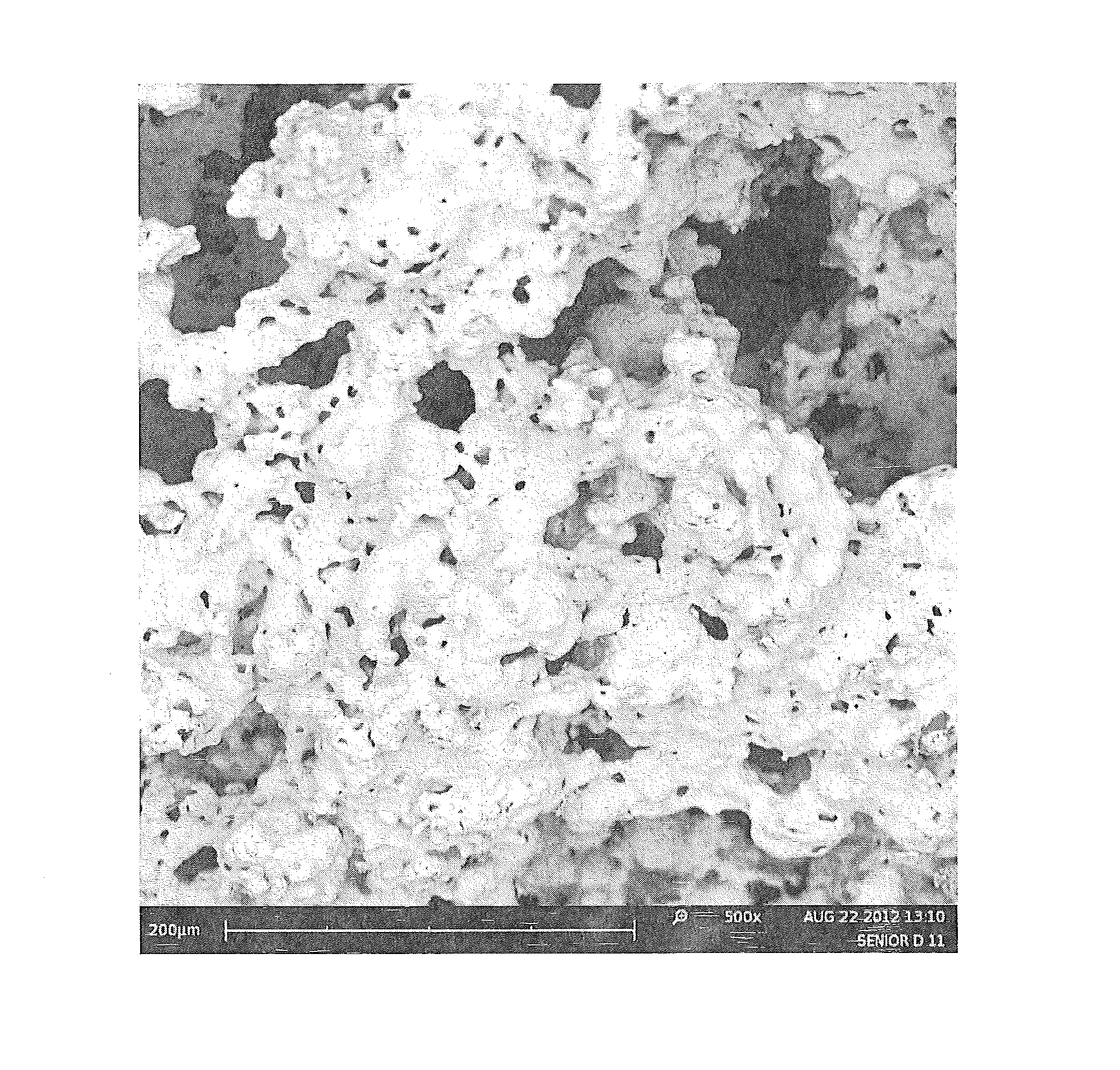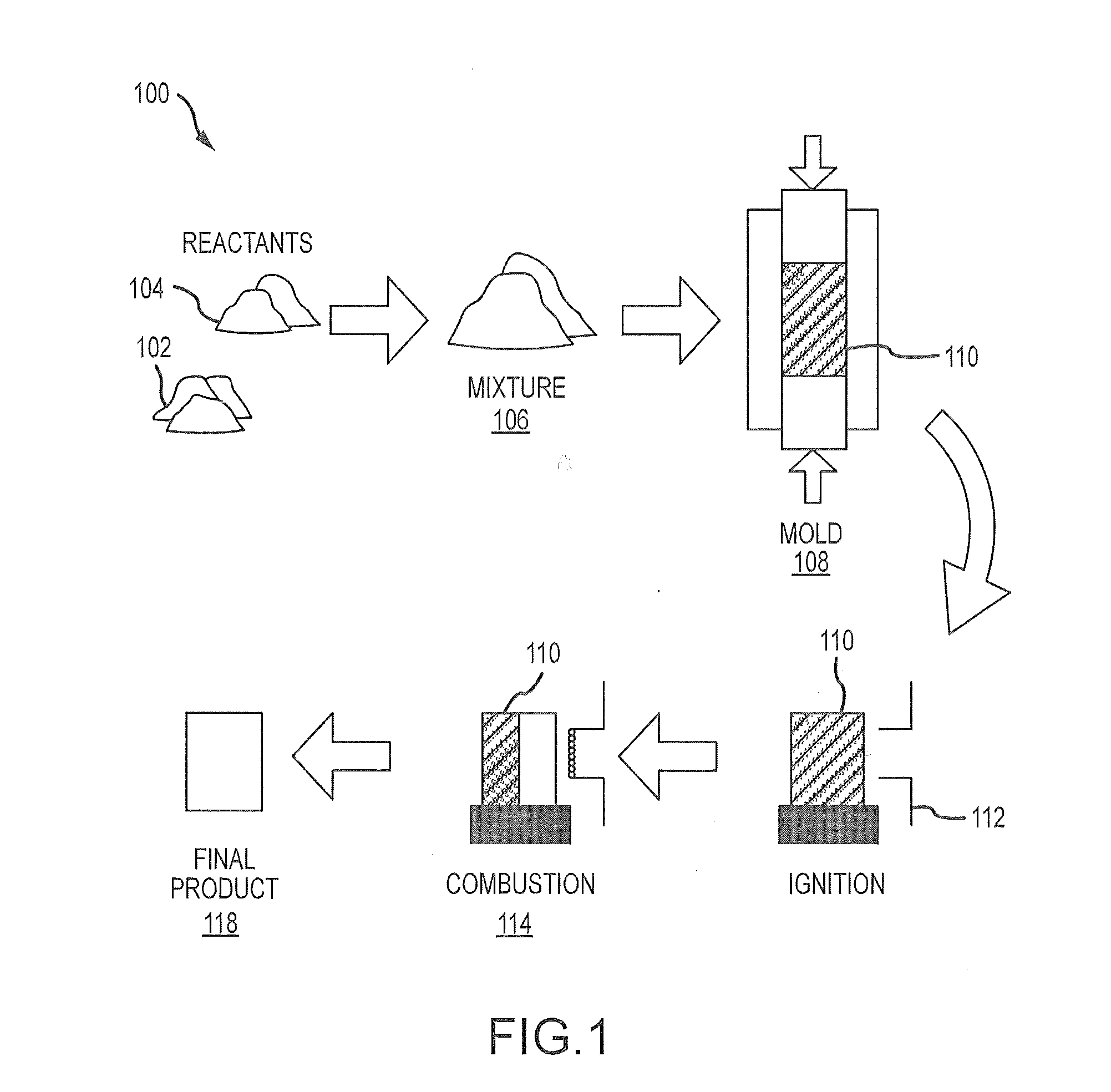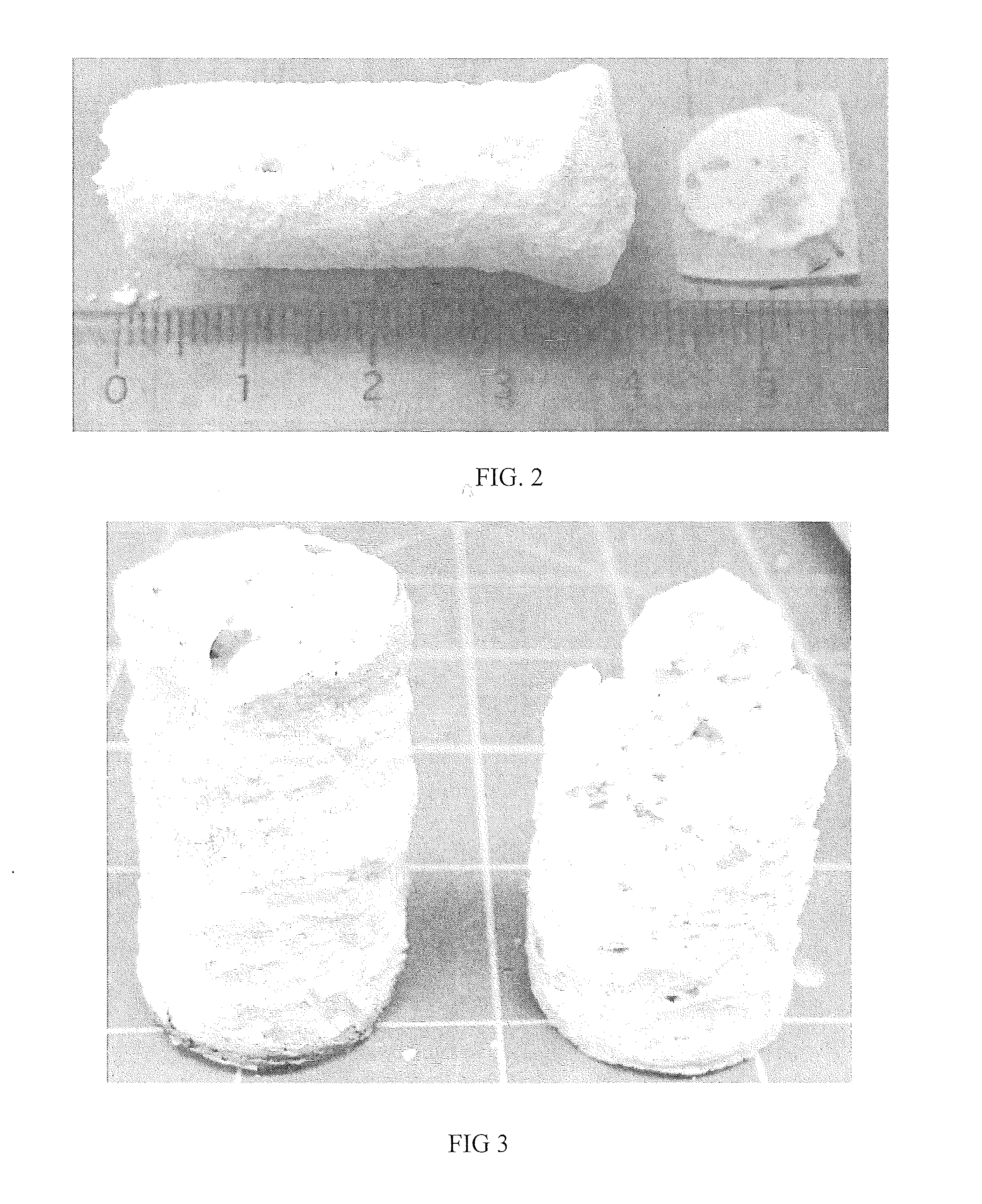Combustion synthesis of calcium phosphate constructs and powders doped with atoms, molecules, ions, or compounds
a technology of synthesis and calcium phosphate, which is applied in the field of combustion synthesis of calcium phosphate constructs and powders doped with atoms, molecules, ions or compounds, can solve the problems of limited amount of bone tissue that can be extracted, participants needing to have their bones repaired, and loss of bone, so as to enhance, improve or incorporate specific properties of the synthesized calcium phosphate materials to achieve their biologic potential. the effect of cost-effectiveness
- Summary
- Abstract
- Description
- Claims
- Application Information
AI Technical Summary
Benefits of technology
Problems solved by technology
Method used
Image
Examples
example 1
[0068]Reactant powders CaO (Fisher, 325 mesh, 99.99% pure), and P2O5 (Fisher, 100 mesh, 99.99% pure), were combined with an about 3:1 ratio (CaO:P2O5) molar ratio and about 0.5 weight % silver, about 1 weight % silver or 2 weight % silver (CERAC, 325 mesh, 99.99%) in a vibrational mixer (LABRAM™) for about 1 minute. Due to the hygroscopic and reactive nature of P2O5, powders were prepared in a desiccated argon atmosphere. Pellets with dimensions of φ=about 3 in, h=about 3 in, w=about 500 g were pressed and subsequently reacted with a hot press (ENERPAC™) in argon environment. Post-synthesis the pellets were air cooled to room temperature, photographed, and analytically characterized via Scanning Electron Microscopy (SEM) and X-Ray Diffraction (XRD).
[0069]A thermochemical assessment of the modified system was performed using HSC Chemistry 5.1 (Outotec©). FIG. 8 illustrates a Temperature-Free Energy plot illustrating that calcium phosphate had the lowest free energy and is therefore t...
example 2
[0074]Synthetic bone graft materials were prepared in accordance with the invention. Products were characterized to determine phases and porosity characteristics through X-ray diffraction, scanning electron microscopy and Fourier transform infrared spectroscopy. Collagen attachment and immunofluorescence labeling were performed to determine which post synthesis heat treatment displayed the highest potential for collagen binding. Results from characterization showed 100% β-TCP in heat treatments of about 1100° C. and about 1150° C. and about 20% α-TCP and about 80% β-TCP in heat treatments of about 1200° C. and about 1250° C. Porosity amongst heat treatments appeared to be consistent and remained about 40±7.8%. A bimodal distribution in pore diameter was found with micropores ranging from about 4 μm to about 12 μm and macropores ranging from about 200 μm to about 4000 μm. Type I collagen attachment at room temperature under agitation was the most effective method to cold mounted and ...
PUM
| Property | Measurement | Unit |
|---|---|---|
| weight | aaaaa | aaaaa |
| pressure | aaaaa | aaaaa |
| velocity | aaaaa | aaaaa |
Abstract
Description
Claims
Application Information
 Login to View More
Login to View More - R&D
- Intellectual Property
- Life Sciences
- Materials
- Tech Scout
- Unparalleled Data Quality
- Higher Quality Content
- 60% Fewer Hallucinations
Browse by: Latest US Patents, China's latest patents, Technical Efficacy Thesaurus, Application Domain, Technology Topic, Popular Technical Reports.
© 2025 PatSnap. All rights reserved.Legal|Privacy policy|Modern Slavery Act Transparency Statement|Sitemap|About US| Contact US: help@patsnap.com



